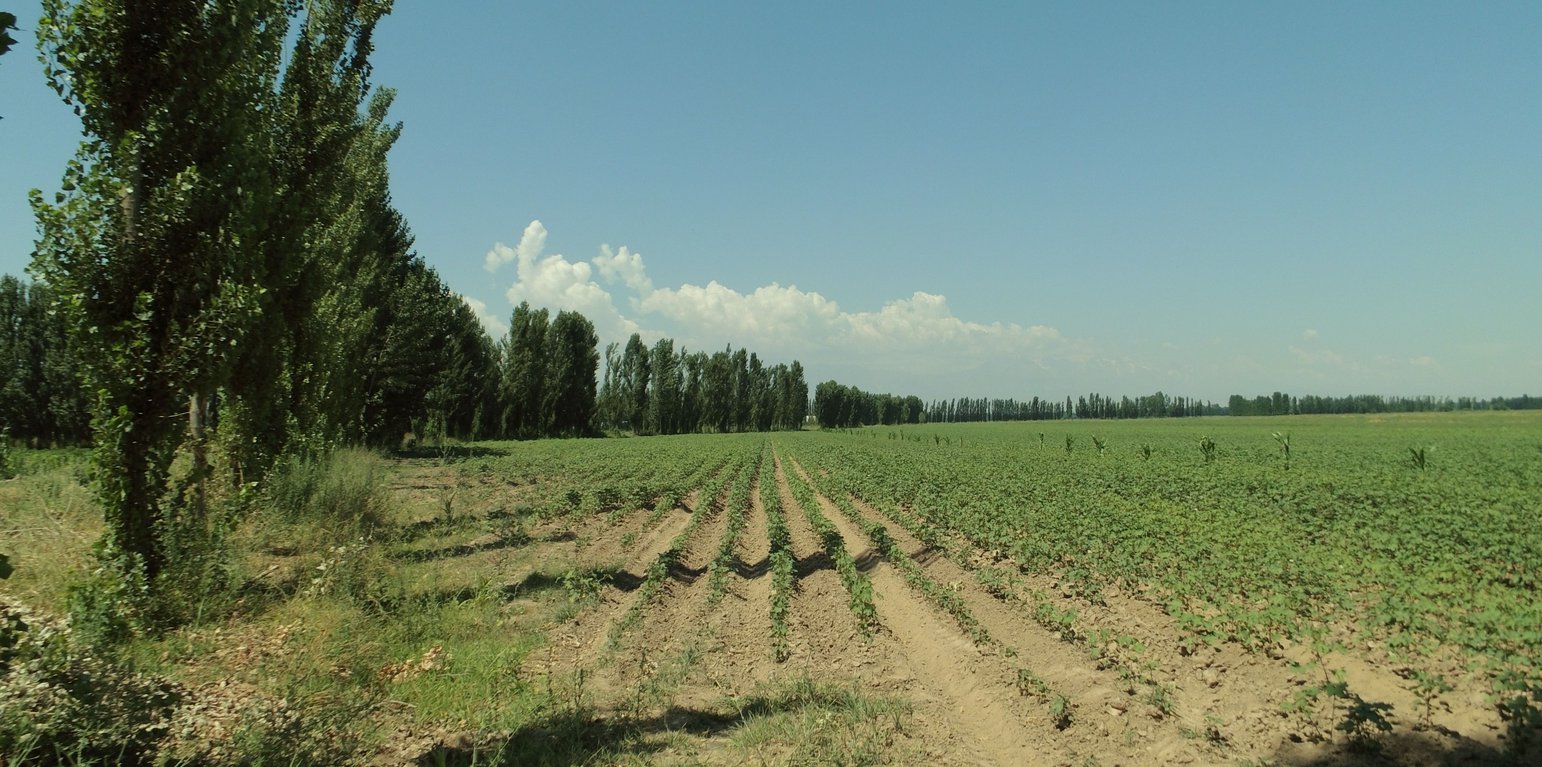



Windbreaks of trees are a major agroforestry system across Central Asia. The SLM technology presented here concentrates on windbreaks, chiefly of poplar trees (Populus nigra var. pyramidalis), within irrigated agriculture. These windbreaks of poplars have a long tradition as an agroforestry system in irrigated agriculture in the river basins of south and southeastern Kazakhstan, Kyrgyzstan, Tajikistan, Turkmenistan, and Uzbekistan. In Kazakhstan and northern parts of Kyrgyzstan, poplars are partly replaced by Elm (Ulmus minor) windbreaks.
After those five countries had become independent, a large share of the windbreaks was cut down primarily for fuelwood and secondarily for timber, as the energy supply system had broken down in the course of the disintegration of the Soviet Union. Such windbreaks reduce the overall water consumption of irrigated agriculture by 10-20% compared to open field conditions, depending on crops and tree spacing (Thevs et al., 2019: doi:10.3390/land8110167). The trees serve as an additional source of income, chiefly from sustainable harvest of the trees for timber. Windbreaks also help to increase crop yields. In total, farm income is increased by 10-15% over the rotation period of the trees (Thevs and Aliev, 2021: https://doi.org/10.1007/s10457-021-00617-7). The rotation period of poplars is between 12 and 20 years, depending on the climatic conditions, e.g. poplars in the Ferghana Valles reach DBH (diametre at breast height) values of 22-27 cm and tree heights of 18 m after 13 years.
In this recent assessment, it was found that windbreaks of single tree rows with distances between trees of 1 m had the best effects on water saving and increasing farm income. The most suitable spacing between windbreaks was found to be around 200 m.
Windbreaks are perceived differently by land users depending on the region and knowledge (Ruppert et al., 2020: doi:10.3390/su12031093). For example, land users in the Ferghana Valley perceived windbreaks positively and were planting them primarily with the aim to have wood resources in the near future. In contrast, land users in the northern part of Kyrgyzstan were afraid firstly that windbreaks shaded their crops, consumed space, and competed for water and nutrients, and secondly that planting windbreaks may cause conflicts with neighbours due to those negative connotations. Farmers with larger field plots were more open towards them.
Windbreaks are planted with 2-year-old poplar saplings, which are locally available. The preferred place to plant is along irrigation ditches or other existing field boundaries. If windbreaks are planted along irrigation ditches, they simply tap water from the moist soil or elevated groundwater adjacent to those ditches. Otherwise, the trees need to be irrigated like the crops. As furrow irrigation is the dominant irrigation practice throughout Central Asia, poplars can be integrated without further adjustments in the field of irrigation. Alongside irrigation ditches poplars can withstand high water levels in those ditches as they occur during irrigation periods. If farmers switch to drip irrigation, and irrigation ditches are no longer present, the trees will need to be supplied with a dripline as well. The locally available poplar cultivars do not need additional fertilizer, but profit from the fertilizer applied to the crop. Only if high yielding modern cultivars were to be used, additional fertilizer application to the trees would be needed to unfold their full potential.
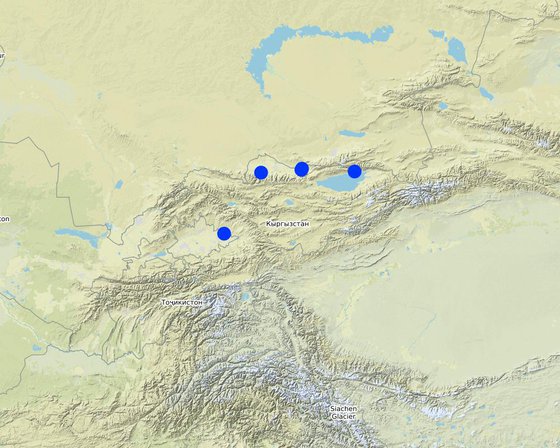
Lieu: Jalalabad Region, Chui Region, and Issyk Kul Region, Kirghizistan
Nbr de sites de la Technologie analysés: 10-100 sites
Diffusion de la Technologie: répartie uniformément sur une zone (approx. 0,1-1 km2)
Dans des zones protégées en permanence ?: Non
Date de mise en oeuvre: il y a entre 10-50 ans
Type d'introduction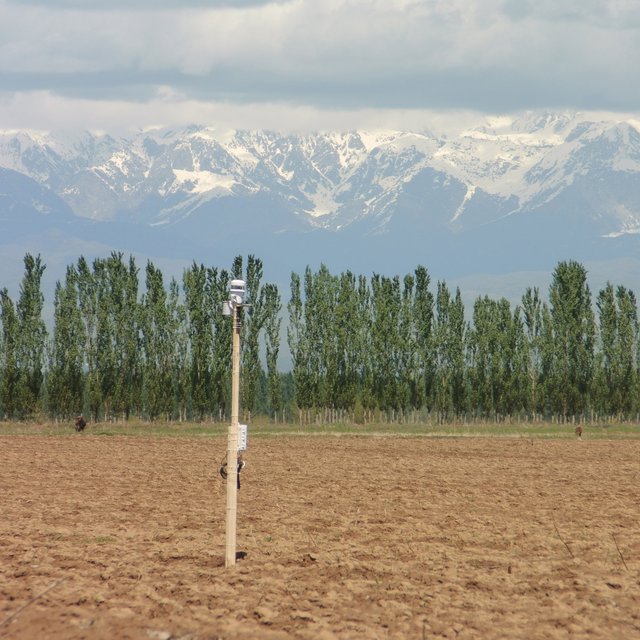
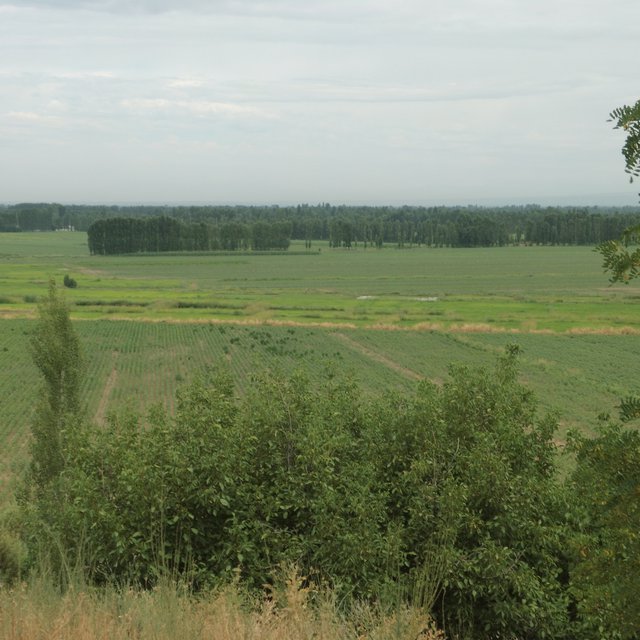




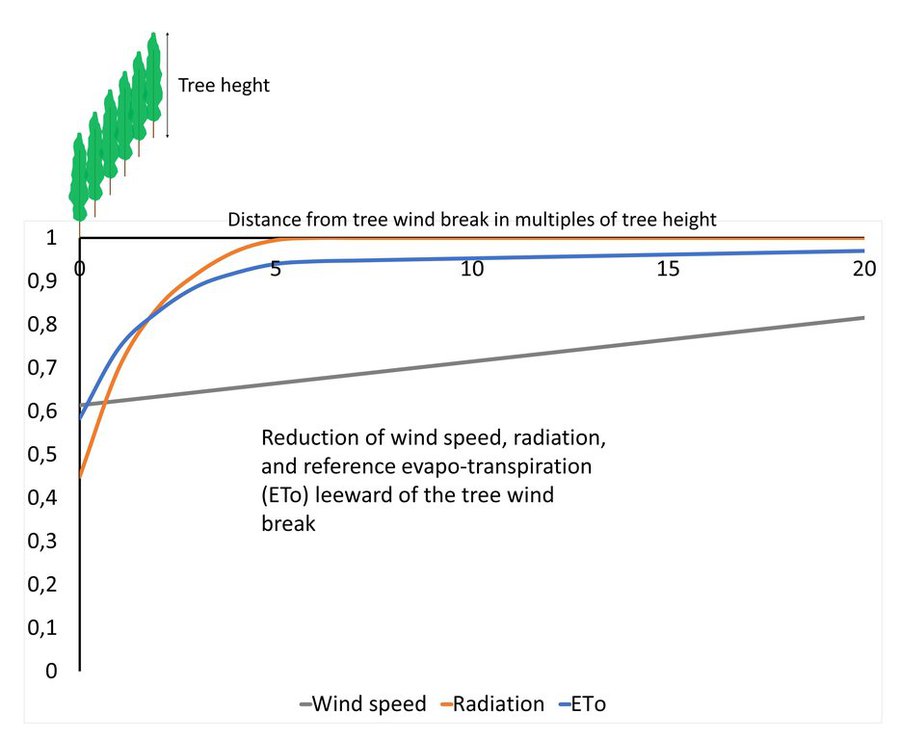
| Spécifiez les intrants | Unité | Quantité | Coûts par unité (KGS) | Coût total par intrant (KGS) | % des coût supporté par les exploitants des terres |
| Main d'œuvre | |||||
| Labor costs for tree planting and maintenance (first year) | man-days | 3,0 | 750,0 | 2250,0 | 100,0 |
| Labor costs for tree maintenance (second year) | man-days | 3,0 | 650,0 | 1950,0 | 100,0 |
| Equipements | |||||
| Labor costs to harvest trees (at tree age 15 years) | man-days | 3,0 | 70,0 | 210,0 | 100,0 |
| Matériel végétal | |||||
| Poplar saplings | sapling | 116,0 | 20,0 | 2320,0 | 100,0 |
| Transport of saplings | 500,0 | 1,0 | 500,0 | 100,0 | |
| Coût total de mise en place de la Technologie | 7'230.0 | ||||
| Coût total de mise en place de la Technologie en dollars américains (USD) | 104.98 | ||||
| Spécifiez les intrants | Unité | Quantité | Coûts par unité (KGS) | Coût total par intrant (KGS) | % des coût supporté par les exploitants des terres |
| Main d'œuvre | |||||
| Labor costs for soil preparation | man-days | 6,81 | 750,0 | 5107,5 | 100,0 |
| Labor costs for sowing | man-days | 2,5 | 750,0 | 1875,0 | 100,0 |
| Equipements | |||||
| Labor costs for irrigation | man-days | 23,64 | 750,0 | 17730,0 | 100,0 |
| Labor costs to apply fertilizer and plant protection | man-days | 3,34 | 750,0 | 2505,0 | 100,0 |
| Labor costs for harvest (cotton) | man-days | 32,78 | 554,0 | 18160,12 | 100,0 |
| Machine costs (rent) for soil preparation | ha | 1,0 | 10021,0 | 10021,0 | 100,0 |
| Machine costs (rent) for sowing | ha | 1,0 | 1316,0 | 1316,0 | 100,0 |
| Machine costs for fertilizer application | ha | 1,0 | 1200,0 | 1200,0 | 100,0 |
| Matériel végétal | |||||
| Seeds | kg | 50,0 | 101,0 | 5050,0 | 100,0 |
| Engrais et biocides | |||||
| Fertilizer | kg | 375,0 | 19,25 | 7218,75 | 100,0 |
| Plant protection | ha | 1,0 | 1517,0 | 1517,0 | 100,0 |
| Autre | |||||
| Water fee | ha | 1,0 | 1014,0 | 1014,0 | 100,0 |
| Coût total d'entretien de la Technologie | 72'714.37 | ||||
| Coût total d'entretien de la Technologie en dollars américains (USD) | 1'055.82 | ||||
There is agreement in the scientific literature that tree windbreaks cause crop yield increases of 10-15%. Some references even claim crop yield increases of up to 40%.
The leaves of the trees are partly used as fodder. But that additional fodder only is a minor contribution to the overall fodder demand.
Quantité avant la GDT: none
Quantité après la GDT: 53 m³/ha after 15 years
Trees are harvested at an age of 15 years. Such trees have an average tree height and DBH of 19 m and 27 cm, respectively. Given a form factor of 0.42 one tree yields a stem volume of 0.457 m³. A number of 116 trees is assigned to 1 ha, which results in 53 m³/ha.
Quantité avant la GDT: 1 ha cropland
Quantité après la GDT: 0.9 ha cropland
Tree wind breaks occupy space so that the area available to the crop gets reduced. While the trees do not occupy substantial space during their first years of growth, they occupy about 10% of the cropland at and age of 10-15 years. This calculation was made for a spacing between tree wind breaks of 200 m.
Tree windbreaks at a spacing of 200 m do not impede farm operations, while narrower spacing may disturb farm operations, in particular with machines.
Quantité avant la GDT: 904 mm over the cropping season
Quantité après la GDT: 777 mm over the cropping season
ETc (water consumption) of cotton is 904 mm over the whole cropping season. Tree windbreaks (arranged as a rectangular grid with a spacing of 200 m) with cotton together consume 777 mm over the whole cropping season. (cf. comment below under evaporation)
There are expenses for tree planting material and labour associated to tree planting and maintenance during the first and second year.
Quantité avant la GDT: Accumulated NPV after 15 years: 214,000 KSG/ha
Quantité après la GDT: Accumulated NPV after 15 years: 232,000 KSG/ha
The accumulated NPV over 15 years for cotton versus cotton and tree wind breaks were compared to assess the financial gain from tree wind break systems. 15 years is the tree age at which the tree wind breaks are harvested. Costs and revenues were discounted at a discount rate of 17.5%.
Wood resources are added as additional income next to crops.
Quantité avant la GDT: 904 mm over the cropping season
Quantité après la GDT: 777 mm over the cropping season
ETc (water consumption) of cotton is 904 mm over the whole cropping season. Tree win breaks (arranged as a rectangular grid with a spacing of 200 m) with cotton together consume 777 mm over the whole cropping season. (cf. comment above under irrigation water demand)
As tree wind breaks reduce evapotranspiration, they help to maintain soil moisture.
Wind erosion did not play a role in this example of cotton combined with tree windbreaks. Though in other parts of Kyrgyzstan or Central Asia stronger winds prevail than in this very example. There, tree wind breaks do combat wind erosion.
Salinity did not play a role in this example of cotton combined with tree windbreaks. Though in other parts of Kyrgyzstan or Central Asia salinity does play a role. There, windbreaks, in particular poplar trees, help to lower the groundwater levels due to their high water consumption, which helps to combat soil salinization.
The leaves of the trees partly end up as litter on the soil surface. The trees' root systems add to the below ground biomass. Both contribute to the formation of soil organic matter. Though, this is limited to a small area adjacent to the tree wind breaks and does not translate into the area of the cropland.
As the evapotranspiration (water consumption) and the demand for irrigation water are reduced, the general availability of water is increased.
Neighboring fields are partly shaded.